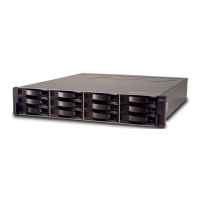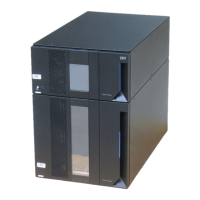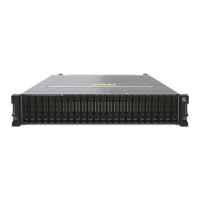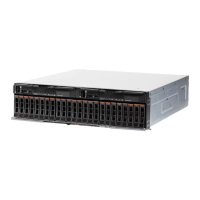Tr ay h a n d l e
Tr ay l a t c h
c. Slide the E-DDM CRU into the empty bay until the hinge of the tray handle
latches beneath the storage subsystem bezel or the adjacent E-DDM CRU
bezel.
Note: Make sure that the EMC gasket does not snag on the bezel.
d. Push the tray handle down until it latches into place.
Replacing hot-swap E-DDMs
E-DDM problems include any malfunctions that delay, interrupt, or prevent
successful I/O activity between the hosts and the E-DDMs in the storage
subsystem. This includes transmission problems between the host controllers and
the E-DDMs. This section explains how to replace a failed E-DDM.
Note: If you want to remove an E-DDM that is not in a failed or bypass state,
always use the Storage Manager client program either to place the E-DDM
in a failed state or to place the array that is associated with the E-DDM (or
E-DDMs) in an offline state before you remove it from the storage
subsystem.
Attention: Failure to replace the E-DDMs in their correct bays might result in loss
of data. If you are replacing an E-DDM that is part of a configured array and logical
drive, make sure that you install the replacement E-DDM in the correct bay. Check
the hardware and software documentation that is provided with your DS5020 to see
if there are restrictions regarding E-DDM configurations.
Before you begin, ensure that you wear an anti-static wrist strap.
Complete the following steps to replace a hot-swap E-DDM:
1. Use the DS Storage Management client software to print a new storage system
profile.
2. Determine the location of the E-DDM that you want to remove.
Attention: Never hot-swap an E-DDM CRU when its associated green Activity
LED is flashing. Hot-swap an E-DDM CRU only when its associated amber
Fault LED is lit and not flashing.
Figure 82. E-DDM CRU handle
Chapter 5. Replacing components 133
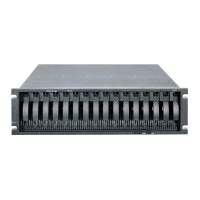
